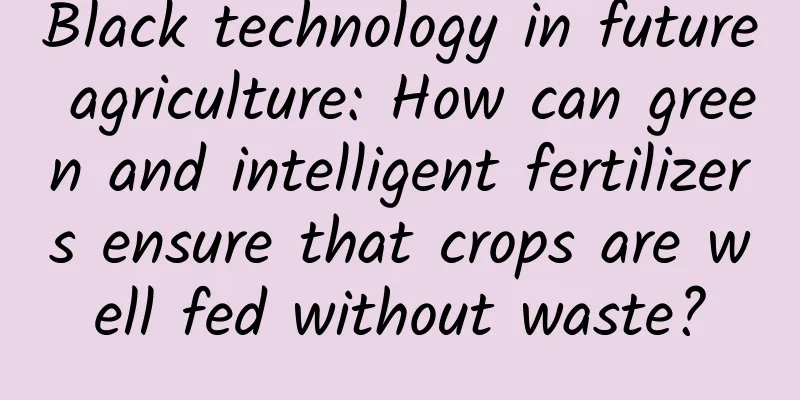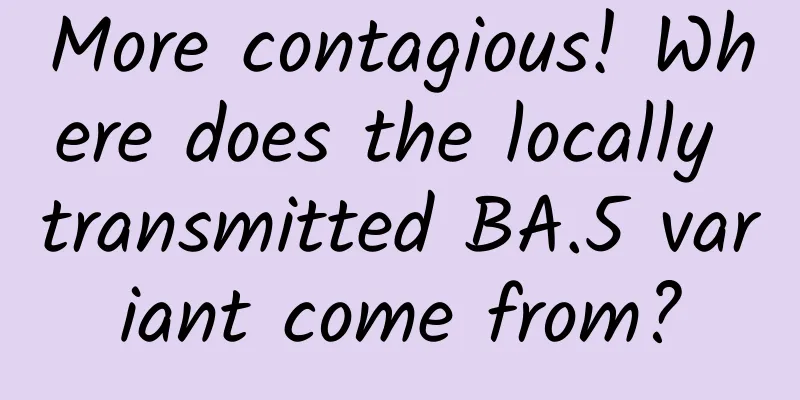Black technology in future agriculture: How can green and intelligent fertilizers ensure that crops are well fed without waste?

|
Imagine that you are a farmer, carrying bags of fertilizer and sweating in the fields every day. But no matter how you apply fertilizer, half of the fertilizer will always disappear - either washed into the river by rain to "feed the fish", or turned into greenhouse gas "going up to the sky", or even making the soil more and more "picky". This is not only your trouble, but also the pain point of global agriculture. However, scientists at China Agricultural University recently made big news! They developed a "thinking" fertilizer - green smart fertilizer. It can accurately capture the needs of crops like a "nutrition housekeeper", so that fertilizer utilization rate soars, and it can also make the soil "rejuvenate". This research was published in the international journal "Frontiers in Agricultural Science and Engineering". Let's see how amazing it is! The "side effects" of traditional fertilizers: feeding crops but damaging the earth Since the Germans invented the "Haber process" ammonia synthesis technology in 1908, fertilizers have become the "lifeline" of modern agriculture. Data shows that global fertilizer use has increased sixfold in the past 60 years, and China accounts for one-third of the world's production and consumption. But here comes the problem: these fertilizers are actually a "prodigal son"! Eat half and spit out half: The utilization rate of nitrogen fertilizer is only 25%-30%, and the utilization rate of phosphorus fertilizer is even worse, only 18%-20%. This means that for every 10 kilograms of fertilizer spread, 7 kilograms are "fishing". The earth is facing the "three highs" crisis: escaped nitrogen turns into nitrous oxide (the greenhouse effect of which is 298 times that of carbon dioxide), and phosphorus and potassium turn into "river killers", triggering outbreaks of blue algae and suffocation of fish and shrimp. Resource black hole: Every year, 80% of China’s phosphate rock and 60% of its sulfur are fed to fertilizer plants, and it also consumes 2% of the country’s coal and 3% of its natural gas. Scientists are heartbroken: "How can this be called farming? It's just a waste of money and destroying the land!" The "wisdom code" of green smart fertilizer: let fertilizer learn to "read minds" Different from the "bombardment" of traditional fertilizers, green smart fertilizers take the route of "precision medicine". Its core skills include: 1. Understand the “whisper” of plants The roots of crops secrete special signal molecules, just like sending WeChat messages such as "hungry" or "thirsty". Smart fertilizers have built-in "molecular translators" that release nutrients immediately upon encountering these signals. For example, if a phosphorus deficiency signal is detected, the phosphorus in the fertilizer will "break out" and be sent directly to the roots. (Image source: Pixabay.com) 2. Become an environmental chameleon During droughts, the water-absorbing material on the outer layer of the fertilizer automatically "stores water" and releases nutrients when the soil becomes moist; On hot days, temperature-sensitive materials start the "instant mode" to satisfy the crops' increased appetite; When encountering acidic soil, the pH responsive coating allows phosphorus to avoid the "obstacles" of calcium and magnesium, thereby increasing the absorption rate. 3. Play with "nutrition mix and match" The quick-acting nitrogen and slow-release phosphorus and potassium are packaged into a "nutrition package" to promote seedling growth in the early stage and ensure yield in the later stage. It is like arranging a "personal nutritionist" for the crops, automatically switching the recipe at different growth stages. (Image source: Pixabay.com) Practical example: Equipping macadamia nuts with a “smart stomach” In the steep slope orchards of Yunnan, scientists have customized a special smart fertilizer for the delicate macadamia nuts: Double phosphorus combination: use water-soluble phosphorus to promote rooting in the early stage, and use citric acid-soluble phosphorus to match the unique "cluster root" secretion ability of fruit trees in the later stage; The "golden ratio" of nitrogen fertilizer: ammonium nitrogen promotes lateral roots, while nitrate nitrogen lengthens the main root, allowing the root system to spread out like octopus tentacles; Turning waste into treasure: Using phosphate ore waste and industrial waste acid as raw materials saves money and is environmentally friendly. The results were shocking: fertilizer use was reduced by 35%, but yields increased by 20%! Fruit farmers exclaimed: "In the past, applying fertilizer was like gambling, but now it's like cheating!" (Image source: Pixabay.com) Farmland of the future: from “human sea tactics” to “digital agriculture” Green smart fertilizer is just the beginning, scientists are still preparing for big moves: AI formulator: Analyzes tens of millions of sets of field data through machine learning and customizes a "fertilizer ID card" for each piece of land; Cross-border joint products: Put probiotics, nanomaterials, and even plant hormones into fertilizers so that they can both feed crops and improve soil; Revolution in the entire industry chain: from mines to fields, fertilizer plants and farms are teamed up to turn ore waste into fertilizer, and industrial waste gas into ammonia fertilizer, completely saying goodbye to resource waste. As the corresponding author of the paper, Academician Zhang Fusuo, said: "Future fertilizers are not simple nutrient packages, but intelligent ecological engines that connect plants, soil and the environment." Give the Earth a "Green Commitment" From "slash-and-burn farming" to "smart fertilization", human agriculture has come a long way over tens of thousands of years. When we use satellite remote sensing to monitor nutrients, gene editing to optimize root systems, and big data to predict harvests, perhaps we should thank the scientists who "plant" fertilizers in the laboratory. They make us believe that feeding the world's 9.7 billion mouths does not necessarily have to come at the expense of the environment. The next time you bite into a sweet nut, there might be the wisdom of a fertilizer grain hidden inside! |
<<: 1 in 10 people are affected! Why can kidney disease remain "invisible" for many years?
>>: You may not think that these symptoms are related to lack of sleep →
Recommend
Is there any hope for Windows 10 phones on the brink of collapse?
Although this option may seem like nonsense, it i...
Swimming mice, bulbous-nosed fish: Scientists discover 27 new species of creatures in unexpected places
Located in northern Peru, between the Amazon rain...
International Museum Day | Is visiting a museum tiring? Here are some tips for you!
Today is International Museum Day. Have you visit...
Why didn’t QQ die out like MSN under the strong impact of WeChat?
QQ is the social platform with the largest number...
If I give you 10 million, how would you spend it? The best information flow channel selection strategy!
As an information flow optimizer , there are two ...
This "super-Earth" with a scorching hot surface has only existed in space for half a day?
This super-Earth exoplanet with a fiery surface i...
Uncle Liu's "Time Accumulation Wealth Fixed Investment Practice Course" achieves an annualized return of 15%+
The fixed investment course has an overall framew...
Audi announces the "death date" of the internal combustion engine: all models will be electrified within 15-20 years
Recently, foreign media revealed that Audi is act...
SEM account performance is not good? 80% of the time it’s because you’re thinking wrongly!
After reading this article, I hope you can improv...
Browser rendering process and performance optimization
As we all know, the application layer of the Worl...
It can build a nest with just a few branches. Is there any bird that is better at making things messy than this one?
There is a magical forum in Baidu Tieba - Bird Fo...
WeChat's major update: Video accounts can now post 1-hour long videos
With the cheap price of traffic, video has become...
Titles always lack appeal? Let’s try the 4 principles + 6 elements of this title
As we all know, the number of readers of public a...
Online operation strategy
The following is an outline of the content of thi...
Future iPhones may use under-screen light sensors to reduce the size of the notch
Apple is working on an ambient light sensor that ...









